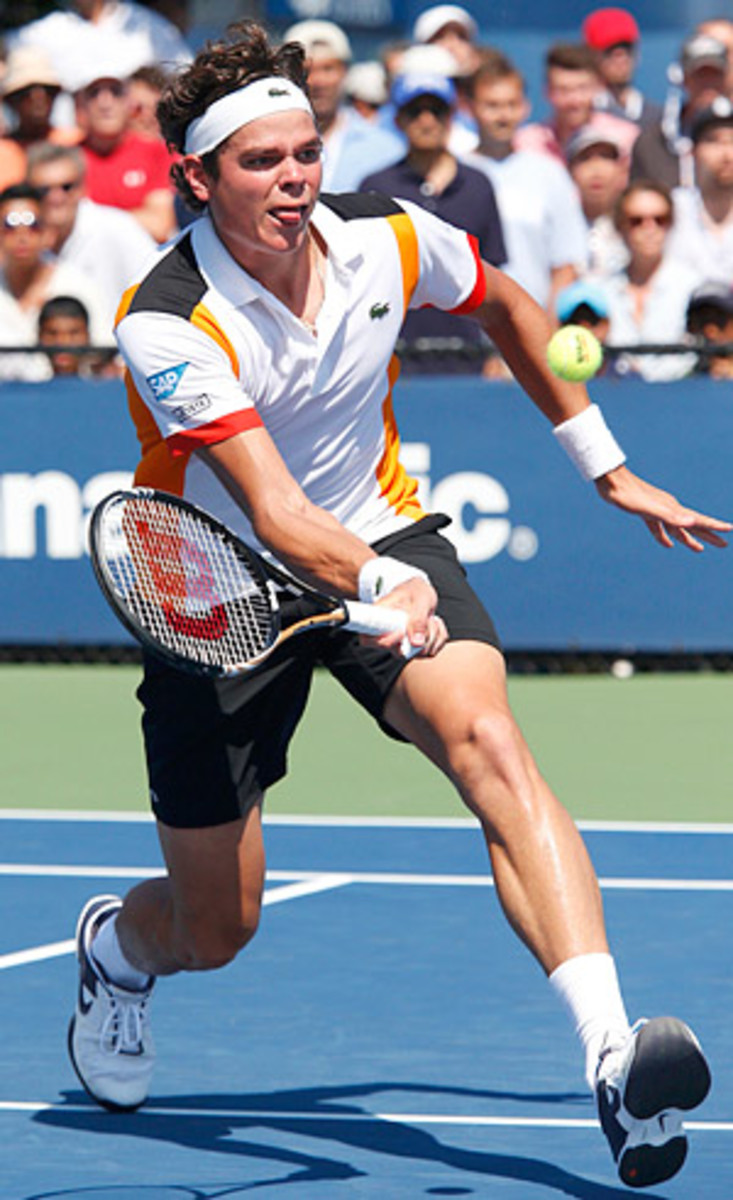Milos Raonic survives first-round scare

Milos Raonic overcame 15 double faults to get his first main-draw victory at the U.S. Open. (Eduardo Munoz/Reuters)

Despite ascending to a career-high No. 16 in the rankings, Milos Raonic has spent much of 2012 losing matches he had every right to win. On a blistering Tuesday afternoon in New York, though, Raonic flipped the script, overcoming an uneven performance and rallying to defeat Santiago Giraldo 6-3, 4-6, 4-6, 6-4, 6-4 for his first career victory at the U.S. Open.
Raonic, 21, the youngest player in the top 20, has been on the wrong side of a series of high-profile matches decided by the smallest of margins this year. For starters, there was that near-miss in the second round of Madrid, where he fell to Roger Federer 4-6, 7-5, 7-6 (4) in one of three tight losses to the Swiss this year; the 6-7 (3), 7-6 (7), 7-6 (8), 6-4 loss to Sam Querrey in the second round of Wimbledon; and, of course, his Olympic epic against Jo-Wilfried Tsonga, which the Frenchman won 6-3, 3-6, 25-23 in another second-round match.
Any of those matches could have gone either way, and in each Raonic played well enough to win. But he didn't, and those losses and others like them have led some to wonder, When are you going to break through, Milos? And if you will allow for a follow-up question, when will you break through at a Grand Slam tournament?
While Raonic has won three titles (including two this year) and scored some quality wins at tour-level events, he has underperformed at the Slams. The big-serving Canadian lost in the third round of both the Australian Open (to Lleyton Hewitt) and French Open (to Juan Monaco) this year, in addition to that second-round loss to Querrey at the All England Club. These were tough losses but not altogether bad ones. Setting the Hewitt loss aside (Raonic panicked in that one), he performed well against Monaco and Querrey.
That wasn't the case Tuesday on Court 11, where the red-faced and frustrated Raonic found himself down two sets to one to Giraldo, a Colombian ranked No. 46. This wasn't a match Raonic should lose. This was a match he was expected to win. After all, Raonic dismissed Giraldo in straight sets at Wimbledon two months ago.
But the No. 15 seed looked out of rhythm on his serve (he had 15 double faults overall) and played much of the match convinced he could win from the baseline -- or, to be more accurate, from 6 feet behind the baseline. When he did step in to go for his shots, he missed wildly. As Giraldo puffed 80-mph serves into the middle of the box, Raonic danced around and uncorked his forehand, only to miss by several feet. With Raonic yelling and smacking his racket time and time again, Giraldo won the second and third sets and built a 3-1 lead in the fourth -- a break up and tantalizingly close to his first U.S. Open victory and one of the biggest wins of his career.
The 24-year-old Giraldo, however, never did get to that finish line. Put off by a number of umpire overrules and non-overrules that went against him, Giraldo lost his focus and let Raonic back into the match. Giraldo practically gifted Raonic the fourth set with a series of errors, and Raonic, still far from in form -- this match was as pretty as a couple of drunks in a backroom brawl throwing (and missing) haymakers -- was back on level terms. Giraldo never recovered.
When a Giraldo forehand went long on match point, Raonic had the look of a man who was more relieved than celebratory. Players say it all the time, that winning matches when they're not at or near their peak gives them confidence. That seems like an awfully precarious way of earning your strut, but it makes perfect sense. Raonic has played his best and lost quite a few times this year. You walk away from matches like that wondering if that's the level you have to reach to compete on a daily basis. On Tuesday, he was average and survived. If anything, that eases the pressure.
